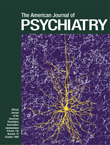This is an excellent overview of the difficult area of obsessive-compulsive disorder (OCD). The editors, Dr. Hollander of Mount Sinai School of Medicine, New York City, and Dr. Stein of the University of Stellenbosch, South Africa, are extensively published in the field and bring wide experience. One or both are co-authors of five of the 14 chapters.
As with any multiauthored, single-issue monograph, there is a fair amount of repetition: 1) OCD is more prevalent than often supposed (about 1%–2% in the general population), 2) there is a purported neurological substrate (corticostriatal-thalamocortical), 3) there is a purported molecular basis (serotonin neurotransmission), 4) there is now effective pharmacological treatment (about 50% of patients have a fair response to selective serotonin reuptake inhibitors), 5) behavioral/psychosocial therapy is effective (about the same as pharmacological treatment), and 6) combined pharmacological and behavioral/psychosocial treatment has advantages (medication allows more people to engage in behavioral/psychosocial therapy and behavioral/psychosocial therapy delays relapse when medication is ceased).
The opening chapter deals with diagnosis and assessment. Dana Niehaus and Dr. Stein draw attention to the DSM-IV modification of the definition of compulsions, which now sensibly includes the “mental acts” that formerly sat out of place as obsessions. Attention is also drawn to the DSM-IV subtype of OCD “with poor insight,” another sensible change, given that 5% of OCD patients lack insight, and the general adult psychiatrist more used to schizophrenia felt threatened by this apparent irregularity. The authors point out that more than 50% of OCD patients have at least one comorbid axis I diagnosis and a majority have at least one other comorbid axis II disorder. They end by reviewing the diagnostic and assessment tools.
There is a chapter on OCD in childhood with valuable information on tic disorders and autoimmune OCD. A chapter on OCD spectrum disorders mentions body dysmorphic disorder, anorexia nervosa, sexual obsessions, hypochondriasis, depersonalization disorder, and Tourette’s syndrome. An interesting chapter on veterinary models introduces the “neuroethological view of OCD” and will be valuable to both human and animal doctors. There are three chapters on psychopharmacology.
There is a chapter on behavioral treatment in OCD that outlines exposure and response prevention, and another by Jeffrey Schwartz of the University of California School of Medicine that outlines the treatment strategy of “re-label, reattribute, and refocus” to be applied whenever an OCD thought or urge arises. Dr. Schwartz also reports on studies that have demonstrated modification of cerebral metabolism through behavioral treatment.
David Shannahoff-Khalsa of the Institute for Nonlinear Science of the University of California contributes a chapter titled “Yogic Meditation Techniques Are Effective in the Treatment of OCD.” He explains that left and right unilateral forced-nostril breathing have different effects on the central nervous system and recommends left unilateral forced-nostril breathing for the treatment of OCD. The objective assessments were done with the electromagnetogram, which is not yet a widely accepted or understood technique.
The final chapter, by James Broatch, gives a useful account of OCD support groups.
This comprehensive book should be available through libraries for keen medical students. It should be purchased by trainee psychiatrists and general psychiatrists who are not expert in the management of OCD. It is well referenced, readable, and well balanced.

